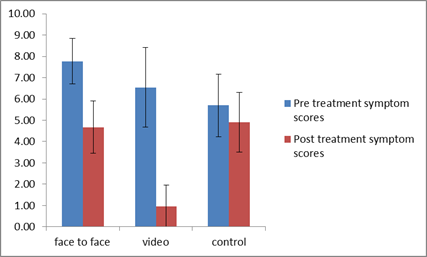Generally, the exercises aimed at focusing the attention and enhancing awareness of the present moment, allowing the participant to perceive a distinction between themselves and any negative thoughts or feelings that they may have.
A quality audit of 12 month programme conducted at a primary school in Sydney in which a full class of 3rd grade children were taught mental stillness-based skills for 10 minutes every morning for a full year. Children were assessed by the class teacher using the SDQ, a standardised and validated mental health risk scale.
Compared to the beginning of the year, children at the end of the year manifested an 80% reduction in mental health risk and a 30% improvement in social skills. Qualitative feedback was also very encouraging, showing that children enjoyed the sessions and wanted more. The class teacher felt that the children were more calm and focused as a result of the exercise and was enthusiastic for the initiative to continue. See graph below.

The Mental Stillness DVD
The Mental Stillness DVD is a simple, evidence-based, free resource aimed at providing students with a secular, meditation-based skill to enhance their resilience and wellbeing.
The sequence in the DVD has undergone extensive development and evaluation in Australia as part of the Meditation Research Programme (previously at the UNSW but now at Sydney University).
The advantage of a resource that is video-based is that it eliminates dependence on instructors. Thereby increasing flexibility in how and when the resource can be used as well as cost of use. The question of course is whether or not the video-resource is as effective as a live instructor. On the one hand a live instructor has greater impact on participants and is able to adapt content delivery to individual circumstances but this is profoundly restricted in the volume of participants that can be benefited. Recruiting and training instructors is expensive and is vulnerable to quality and competence issues. On the other hand a video-resource is much more likely to be deliver consistently, and can do so en-masse while maintaining “treatment fidelity”.

To evaluate the video-resource we compared the impact of live instruction one set of children, to another set of children in the same school who use only the video-resource. A third set of similarly aged children in that school received neither live nor video instruction and therefore served a a control group against which the other two options could be compared.
After two school terms both the video and live instruction groups experienced substanatial improvements. To our surprise however, we found that the video group improved MORE than the live instruction group!

“Silence Your Mind” describes the story behind the development of the mental stillness strategy as well as some of the evidence in more detail. It provides some easy to use, evidence based meditation strategies that have been shown to work with young people, from kindergarten to senior high school.